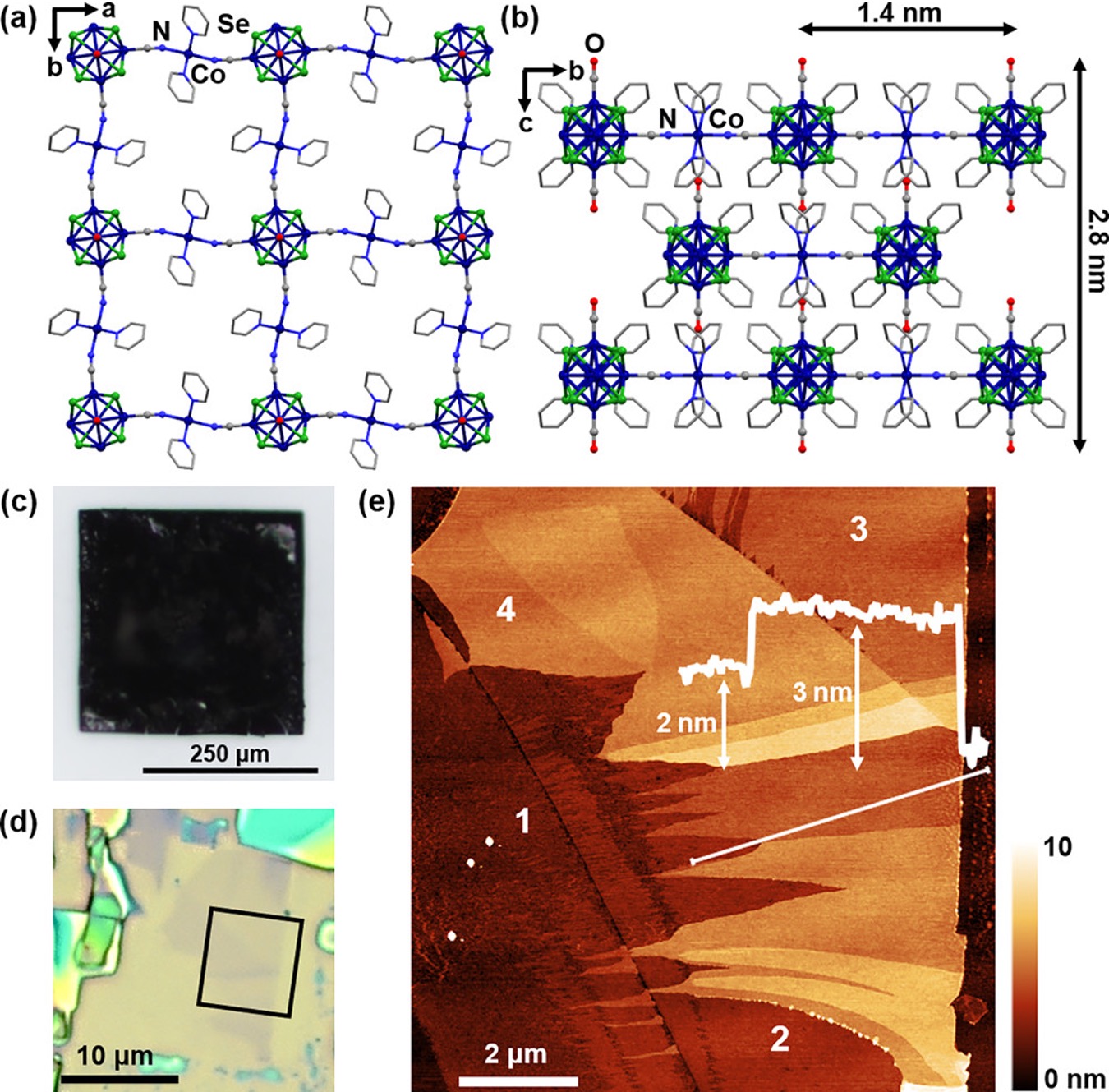 The area of two-dimensional (2D) materials research would benefit greatly from the development of synthetically tunable van der Waals (vdW) materials. While the bottom-up synthesis of 2D frameworks from nanoscale building blocks holds great promise in this quest, there are many remaining hurdles, including the design of building blocks that reliably produce 2D lattices and the growth of macroscopic crystals that can be exfoliated to produce 2D materials. In a recent publication, IRG2 PIs reported the regioselective synthesis of the cluster [trans-Co6Se8(CN)4(CO)2]3–/4–, a “superatomic” building block designed to polymerize and assemble into a 2D cyanometalate lattice whose surfaces are chemically addressable. The resulting vdW material (Panels a and b), [Co(py)4]2[trans-Co6Se8(CN)4(CO)2], grows as bulk single crystals (Panel c) that can be mechanically exfoliated to produce flakes as thin as bilayers (Panel d and e), with photolabile CO ligands on the exfoliated surface. As a proof of concept, we show that these surface CO ligands can be replaced by 4-isocyanoazobenzene under blue light irradiation. This work demonstrates that the bottom-up assembly of layered vdW materials from superatoms is a promising and versatile approach to create 2D materials with tunable physical and chemical properties.
The area of two-dimensional (2D) materials research would benefit greatly from the development of synthetically tunable van der Waals (vdW) materials. While the bottom-up synthesis of 2D frameworks from nanoscale building blocks holds great promise in this quest, there are many remaining hurdles, including the design of building blocks that reliably produce 2D lattices and the growth of macroscopic crystals that can be exfoliated to produce 2D materials. In a recent publication, IRG2 PIs reported the regioselective synthesis of the cluster [trans-Co6Se8(CN)4(CO)2]3–/4–, a “superatomic” building block designed to polymerize and assemble into a 2D cyanometalate lattice whose surfaces are chemically addressable. The resulting vdW material (Panels a and b), [Co(py)4]2[trans-Co6Se8(CN)4(CO)2], grows as bulk single crystals (Panel c) that can be mechanically exfoliated to produce flakes as thin as bilayers (Panel d and e), with photolabile CO ligands on the exfoliated surface. As a proof of concept, we show that these surface CO ligands can be replaced by 4-isocyanoazobenzene under blue light irradiation. This work demonstrates that the bottom-up assembly of layered vdW materials from superatoms is a promising and versatile approach to create 2D materials with tunable physical and chemical properties.